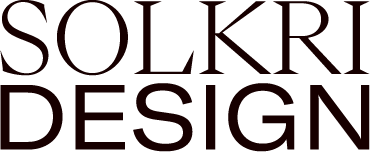The Ultimate Guide to 301 Redirects: Everything You Need to Know
Ever stumbled upon a broken link that led to a frustrating 404 error page? Or maybe you've migrated your website to a new domain and want to ensure your hard-earned online visibility doesn't vanish into thin air. In the intricate world of organic SEO services, 301 redirects stand as your trusty allies, seamlessly guiding users and search engines to the right destination.
In this comprehensive guide, we'll unravel the mysteries of 301 redirects, exploring their significance, implementation, best practices, and common pitfalls to avoid. Whether you're a seasoned SEO professional or a website owner seeking to enhance your organic SEO agency strategies, this post will equip you with the knowledge to master this essential aspect of technical SEO services.
What is a 301 Redirect?
A 301 redirect is a permanent redirect that informs search engines and browsers that a webpage has been moved permanently to a new location. It acts as a bridge, ensuring that users and search engine crawlers seamlessly land on the correct page, preserving your website's online visibility and user experience.
Why are 301 Redirects Important?
Preserving Link Equity: When you move a page, the backlinks pointing to the old URL hold valuable "link equity" that contributes to your website's authority and search engine rankings. A 301 redirect passes most of this link equity to the new URL, safeguarding your hard-earned organic SEO services efforts.
Maintaining User Experience: Imagine clicking on a link and encountering a dreaded 404 error. Frustrating, right? 301 redirects prevent such user experience hiccups, ensuring visitors smoothly reach the intended content.
Consolidating Website Structure: Website redesigns or content reorganizations often involve URL changes. 301 redirects help consolidate your website structure, preventing broken links and maintaining a cohesive user journey.
Implementing 301 Redirects
The method of implementation varies depending on your server setup and content management system. Common approaches include:
.htaccess file (Apache servers): This involves adding redirect rules within your .htaccess file. If you're unsure, consult your web hosting provider or an experienced technical SEO services specialist.
Content Management System (CMS) plugins: Many popular CMS platforms like WordPress offer user-friendly plugins that simplify 301 redirect implementation.
Best Practices for 301 Redirects
Redirect to the Most Relevant Page: Ensure the new URL provides content that's closely related to the old page to maintain user expectations.
Avoid Redirect Chains: Multiple redirects (e.g., A to B, B to C) can slow down page loading and dilute link equity. Aim for direct redirects whenever possible.
Update Internal Links: After implementing redirects, review your internal linking structure and update any links pointing to the old URLs.
Monitor Redirects: Regularly audit your redirects to identify any broken or misdirected links. Tools like Screaming Frog or SEMrush can assist in this process.
Common 301 Redirect Mistakes to Avoid
Redirecting to Irrelevant Pages: Misleading users with irrelevant redirects can harm user experience and negatively impact your website's reputation.
Creating Redirect Loops: A redirect loop occurs when a URL redirects back to itself, leading to an endless cycle. Thoroughly test your redirects to prevent this issue.
Neglecting to Update XML Sitemaps: Ensure your XML sitemaps reflect the new URLs after implementing redirects.
Redirect Your Way to SEO Success
In the dynamic landscape of full-service digital marketing, 301 redirects are indispensable tools for website owners and full-stack digital marketing professionals alike. By mastering their implementation and adhering to best practices, you can safeguard your website's online visibility, user experience, and SEO performance. Remember, a well-executed 301 redirect strategy contributes to a seamless user journey and a search engine-friendly website structure, ultimately enhancing your on-page SEO services and driving organic traffic.
Ready to unlock the full potential of your website's SEO? At Solkri Design, we're a full-service digital marketing agency specializing in crafting data-driven strategies that deliver results. From technical SEO services and on-page SEO services to comprehensive organic SEO agency solutions, we have the expertise to elevate your online presence. Let us help you navigate the complexities of 301 redirects and other crucial SEO elements. Contact us today for a free consultation and discover how we can transform your website into a powerful lead-generation machine!



